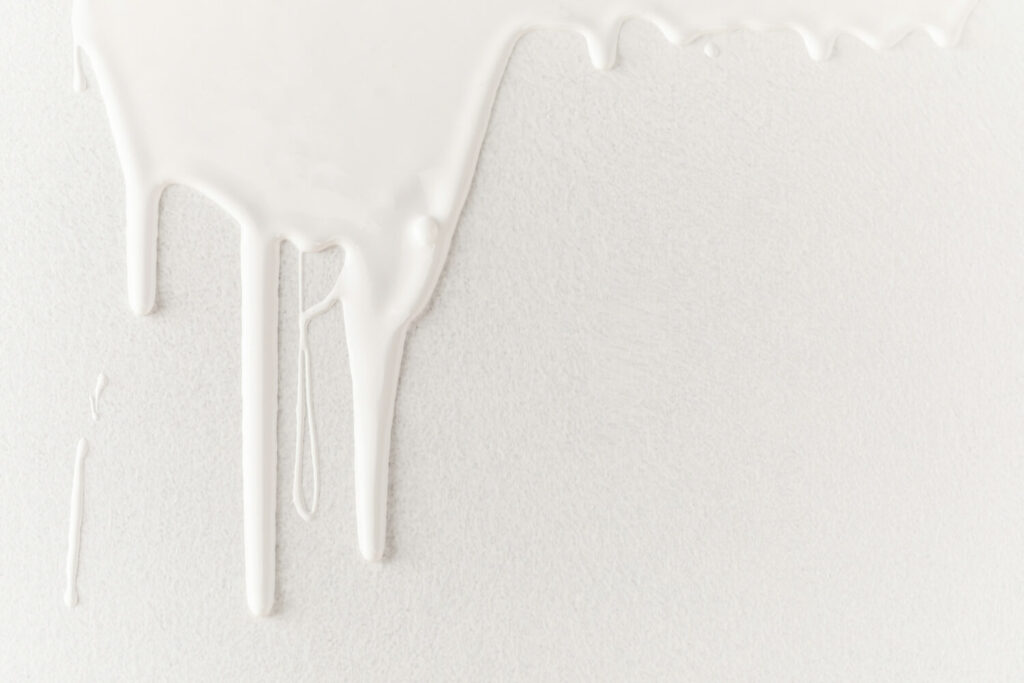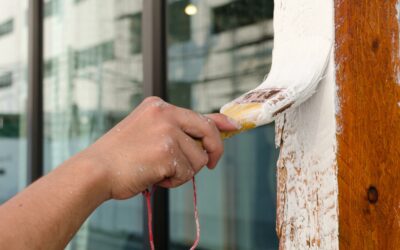
Getting paint drips on a wall is one of the most frustrating issues that you could ever encounter during your home decorating projects. Unfortunately, paint runs are a very common problem. Worse still, paint drips can dry very quickly, which is why knowing how to fix paint runs on walls should form a part of your pre-project preparations.
By the end of this post, you should be prepared to tackle home paint runs in style.
Identifying paint drips on a wall or piece of furniture.
It is estimated that over 1.4 billion gallons of paint are used in the U.S. each year. Moreover, those stats were in 2019 before the pandemic encouraged a growing number of homeowners to update their home surroundings. Paint drips can hit experienced and inexperienced DIY enthusiasts alike.
Paint drips happen when too much paint is applied, usually due to an overloaded paintbrush. Using a utility lamp to improve the lighting situation can help you identify drips before they dry, allowing you to fix them with greater ease.
How to fix paint runs on a wall
When you notice a wet paint drip on a wall, the first thing you should try is to paint it out by brushing the paint runs in the same direction used for the rest of the wall. If no progress is seen after the first few strokes, it means that the paint is already dry. In this instance, you’ll need to try an alternative solution.
In this instance, you must allow the paint to dry. It is estimated that the process will take 4-6 hours, However, you may wish to wait overnight until tackling the paint drips.
Once dried, paint drips are easy to see as they create a raised area on the wall. You can correct these by using a clean scraper to lightly scrape down the drip. You must try to do this with care and precision so that the surrounding painted areas remain unblemished.
The next step of the process is to sandpaper the area so that it becomes smoother. You should ensure that the sanding is completed in the same direction as the paint drip. Again, it is important to take care not to disturb the surrounding areas of the painted wall. However, you are likely to cause some damage. Minor dents can be filled with glazing putty and subsequently left to dry.
Finally, you will want to add another coat of paint to the wall. As long as you take care to avoid future paint drops, you should be left with the perfect results.
Remember, prevention is the best form of protection
While the above steps will often allow you to rescue your walls or furniture, preventing paint drips is the best way to ensure that the desired aesthetics are maintained at all times. Hiring an experienced painting contractor like RMC Painting Pros will ensure that paint drips are avoided while also delivering a fast, convenient, and cost-effective solution.
To find out more, contact our friendly experts in Oregon today.
Read Other Blog Posts
DIY vs. Professional: When to Hire an Exterior Painting Contractor
When you envision improving...
Transform Your Kitchen: How Cabinet Painting Can Make a Big Impact
A kitchen is often the heart...
Repair, Restore, Repaint: The Power of Professional Dry Rot Solutions and Services
Dry rot is often viewed with...
Quality Contractor Counts: Why Investing in Professional Interior Painting Pays Off
When it comes to home...
How General Contractors & Painters Collaborate for a Stunning Renovation Project
Renovating a space is a...
The Ultimate Guide to Choosing the Right Paint Finish for Every Room
When it comes to painting your...






